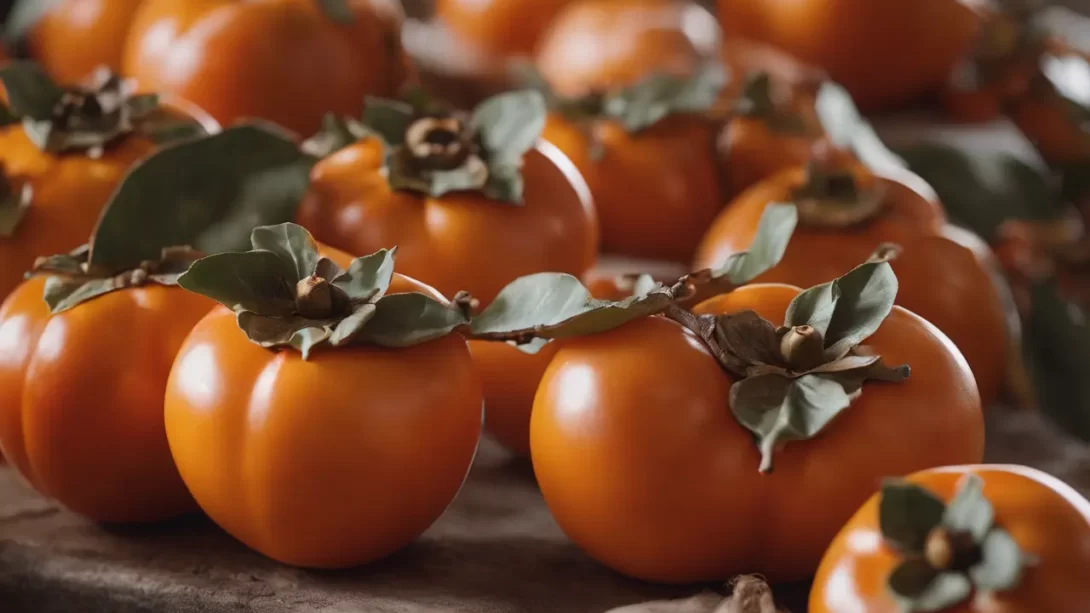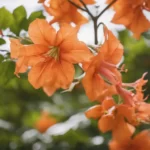Persimmons, with their vibrant color and sweet, honey-like flavor, are a unique and nutritious addition to the fruit world. These fruits are not only a delight to the taste buds but also packed with health benefits. Understanding when persimmon season occurs is key to enjoying them at their best. This article will explore the seasonality of persimmons, helping you to identify the best time to savor these delectable fruits.
Persimmons
Persimmons come in two main types, which are quite different in taste and texture:
- Astringent Persimmons (Hachiya): These are acorn-shaped and known for their astringent, tart flavor when unripe. They become sweet and jelly-like as they ripen.
- Non-Astringent Persimmons (Fuyu): These are tomato-shaped and can be eaten while still firm, offering a sweet, slightly spicy flavor without the astringency.
Knowing the type of persimmon you’re dealing with is crucial, as it affects how and when you can enjoy the fruit.
Persimmon Growing Regions
Persimmons are cultivated in various parts of the world, with each region influencing the fruit’s availability:
- Asia: Countries like Japan, China, and Korea are major producers of persimmons, with each region having its specific varieties.
- United States: California is a significant producer of persimmons in the United States, particularly the Fuyu variety.
- Mediterranean: Countries like Italy and Spain also grow persimmons, adding to the diversity of varieties available.
The climate of these regions plays a significant role in the fruit’s growth cycle and seasonality.
Seasonality of Persimmons
Generally, persimmon season falls in the autumn and early winter months. However, this can vary based on the growing region:
- In the Northern Hemisphere: Persimmons typically become available from late September through December.
- Regional Variations: The exact timing of the season can vary depending on local climate conditions and weather patterns each year.
Understanding these seasonal patterns helps in identifying the best time to buy and consume persimmons, ensuring you get them when they’re at their peak of flavor.
Harvesting and Ripeness
The harvesting and ripeness of persimmons are crucial in determining their taste and usability:
- Harvesting Process: Persimmons are typically harvested when they are fully colored but still firm. This helps in transporting them without damage.
- Ripeness Indicators: For astringent varieties like Hachiya, ripeness is when the fruit becomes soft to the touch. Non-astringent types like Fuyu can be enjoyed even when firm.
- Ripening Post-Harvest: Astringent persimmons can be ripened at room temperature. Placing them next to other ripe fruits can speed up the process due to the release of ethylene gas.
Understanding the ripeness of persimmons is key to enjoying them, as the taste of astringent varieties can be unpleasant if eaten before fully ripe.
Selecting and Storing Persimmons
Choosing and storing persimmons properly ensures that you enjoy them in their best state:
- Selecting Quality Fruit: Look for persimmons that are bright and evenly colored with smooth, unblemished skin. Avoid fruits with bruises or cuts.
- Storing at Home: Keep unripe persimmons at room temperature. Once ripe, they can be stored in the refrigerator to prolong their shelf life. Ripe Hachiya persimmons are best consumed soon after ripening due to their soft texture.
Proper storage extends the enjoyment of persimmons, allowing you to savor their unique flavor over a longer period.
Nutritional Benefits of Persimmons
Persimmons are not just tasty but also offer various health benefits:
- Rich in Nutrients: They are a good source of vitamins, particularly vitamin A and vitamin C. They also contain manganese, fiber, and antioxidants.
- Dietary Fiber: The high fiber content in persimmons aids in digestion and can contribute to a healthy gut.
- Antioxidants: Persimmons contain compounds like flavonoids and tannins, which have antioxidant properties that help in combating oxidative stress in the body.
Including persimmons in your diet during their season can contribute to a healthy and balanced diet.
Culinary Uses of Persimmons
Persimmons are not only nutritious but also incredibly versatile in the kitchen. Here are some ways to incorporate them into your meals:
- Raw Consumption: Ripe Fuyu persimmons can be eaten like an apple, either peeled or unpeeled. Hachiya persimmons, when fully ripe, are soft and can be scooped out with a spoon.
- Baking and Cooking: Persimmons can be baked into desserts like pies, puddings, and bread. They also add a sweet flavor to savory dishes, salads, and sauces.
- Preserves and Jams: Both Hachiya and Fuyu persimmons can be used to make delicious jams, jellies, or compotes.
Exploring different recipes with persimmons can enhance your culinary experience, especially during their peak season.
Conclusion
Persimmon season, spanning from late September to December in the Northern Hemisphere, offers a unique opportunity to enjoy this flavorful fruit. Whether you prefer the jelly-like sweetness of ripe Hachiya or the crisp, spicy-sweet taste of Fuyu, persimmons provide a wealth of culinary possibilities and nutritional benefits. By understanding how to select, store, and ripen these fruits, you can fully enjoy their unique qualities. Remember to incorporate persimmons into your diet during their season for a delightful taste experience that also boosts your health. As each season comes, relish the chance to explore and savor the distinctive flavors and textures that persimmons have to offer.




